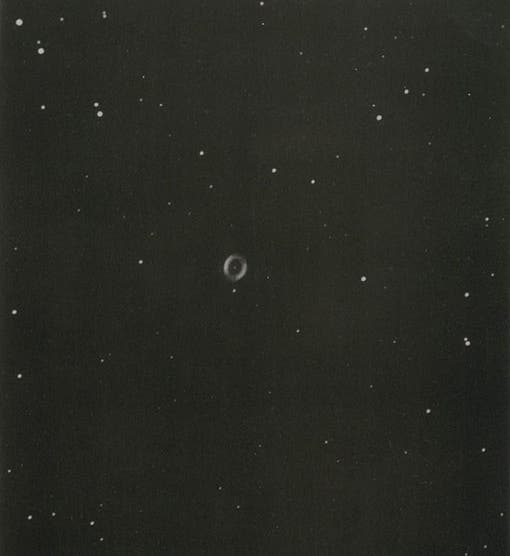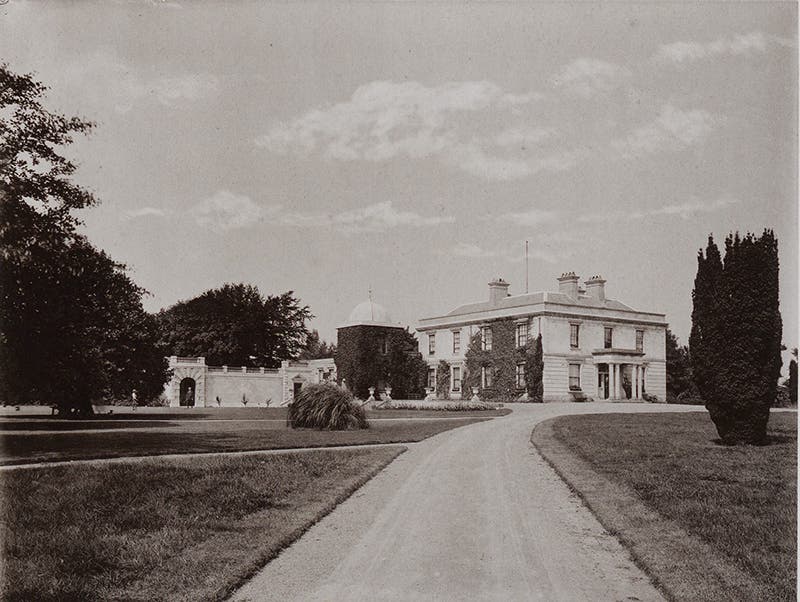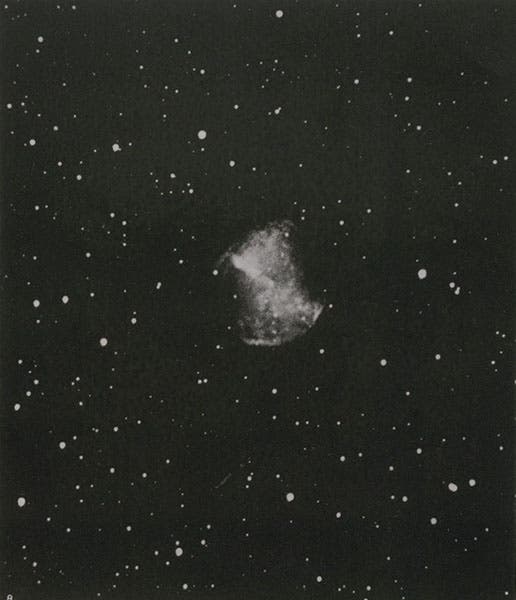Scientist of the Day - William E. Wilson
William Edward Wilson, an Irish astronomer, was born July 19, 1851. Wilson inherited a mansion, Daramona House, in Westmeath in central Ireland, and in 1871, he bult an observatory next to the home, equipping it with a 12-inch reflector made by Howard Grubb, a noted telescope maker in Dublin. No telescope owner is ever happy with their first telescope – it is always too small – and by 1881, Wilson had traded in the 12-inch reflector for a 24-inch silver-on-glass reflector, and he bought a new mount as well, with an accurate clock drive. You can see the two-story observatory, now covered in ivy, in a photo published in 1900 (second image, just below). You can see the telescope in the image below that.
Although, as we shall see, the 24-inch Grubb could take phenomenal deep-sky photographs, Wilson was initially interested in astronomical measurement. For example, he and several colleagues used special instruments to measure the temperature of the Sun, and of sunspots. He also measured the light output of stars, using a selenium cell. He was amazed at the power of Betelgeuse in Orion, which has no measurable parallax (meaning it is very far away), but still sends a prodigious amount of light our way. One of his collaborators was George Francis FitzGerald, a professor in Dublin, who would later contribute to the Lorenz-FitzGgerald contractions used to explain the null result of the Michelson-Morley experiment. The results of Wilson's scientific investigations of the Sun and stars were published in a half-dozen papers in the Philosophical Transactions and the Proceedings of the Royal Society of London, and the Monthly Notices of the Royal Astronomical Society.
Fortunately for us, Wilson decided to republish these papers in a privately-printed book, Astronomical and Physical Researches (1900). At the end of the text, he included 9 of his astrophotographs of star clusters and nebulae, and that is what occupies our visual attention today, because these photographs are remarkable. The ones we include here show the beautiful Ring Nebula in Lyra, M57 (first image); the Dumbbell Nebula in Vulpecula (fourth image, just above); the Whirlpool Nebula in Canes Venatici, M51, the spiral nature of which was discovered by Lord Rosse in 1844 (fifth image, below); and the Great Nebula of Orion (last image). The photographs are reproduced by the collotype process, which Wilson complains about in the text, claiming that detail in the negatives was lost in the reproduction, but they look quite good to us. The prints have wide white margins in the book, which I have cropped out here, so that you can see the photos better; I have shown the entire page for the last image, where the margins were not quite so broad, so that you can get a better sense of how the plates are mounted in the book.
The most renowned photographer of nebulae of the 1890s was Isaac Roberts, and his photographs were excellent, as you will see if you look at our post on Roberts, but Wilson's were just as good, if not better. I do not know how widely Wilson's book was distributed, but it was probably not widely enough, for he does not have the reputation today that he deserves.
Wilson died in 1908, only 56 years old, and his telescope went to the University of London, where it continued to be used, and eventually to Liverpool, where it is on display, still, at the World Museum in Liverpool.
We acquired our copy of Wilson’s beautiful large quarto from the rare book dealer Antiquarian Scientist in 2014.
Dr. William B. Ashworth, Jr., Consultant for the History of Science, Linda Hall Library and Associate Professor emeritus, Department of History, University of Missouri-Kansas City. Comments or corrections are welcome; please direct to ashworthw@umkc.edu.











